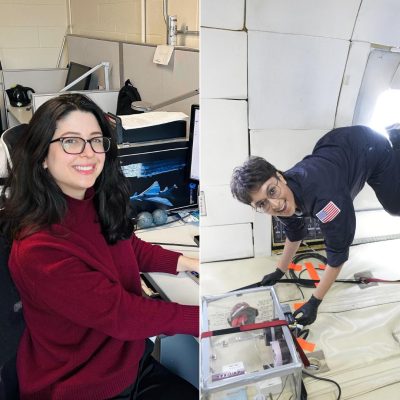
Announcing the MIT ARCLab Prize for AI Innovation in Space
Thousands of satellites in orbit around the Earth are tracked every day. Can you harness AI to find patterns in the data?
The satellite population in the near-Earth space environment has entered an era of exponential growth, inspiring a new wave of satellite-enabled technologies—from high-resolution imagery to global broadband internet—that will forever change the fabric of our global society.
“When the first satellites were launched in the late 1950s, the challenge of keeping track of them was manageable,” says Prof. Richard Linares, MIT Associate Professor of Aeronautics and Astronautics. “As the space environment grows more congested, the networks of ground- and space-based telescopes and radar systems are tasked with collecting more and more observational data of space objects.”
To address this challenge, the MIT Astrodynamics, Space Robotic, and Controls Laboratory (ARCLab) has launched the MIT ARCLab Prize for AI Innovation in Space: a first-of-its-kind online competition to foster AI development to solve challenging problems in the space domain. This year’s challenge asks competitors to harness AI to characterize satellites’ patterns of life (PoLs)—the long-term behavioral narrative of a satellite in orbit—using purely passively collected information. Participants will use machine learning to label and time-stamp the behavioral modes of GEO satellites over a six-month period, competing for accuracy and efficiency. ARCLab will provide baseline solutions to help competitors get started.
With support from the US Department of the Air Force-MIT AI Accelerator, the goal of the competition is to encourage technologists and enthusiasts to bring innovation and new skills sets to well-established challenges in aerospace.
“As the boundaries of space exploration expand, so should our toolbox of problem-solving approaches,” says visiting Prof. Victor Fernandez-Rodriguez. “This competition symbolizes a step toward a future where we break down the walls between disciplines and collectively strive for a safer and more comprehensible space environment.”
How the competition works
ARCLab has developed a groundbreaking benchmarking tool for geosynchronous satellite pattern-of-life characterization and created the Satellite Pattern-of-Life Identification Dataset (SPLID), comprising real and synthetic space object data. Using this dataset, challenge participants will submit algorithms that use AI to map out the on-orbit behaviors of a satellite. To join the competition:
- Register for the challenge. Individuals and teams of any age, background, and skill set are encouraged to register.
- You will receive instructions and access to the challenge via email.
- You will receive periodic updates from the ARCLab team, including answers to common questions and a view of the challenge leaderboard.
- Submissions will be accepted on a rolling basis through the spring, with a final deadline of March 17, 2024.
- A team of judges from MIT ARCLab and Lincoln Laboratory will select finalists.
Prizes and presentation of results
- First place: $10K and a trip for one to Hawaii for the 2024 Advanced Maui Optical and Space Surveillance Technologies (AMOS) Conference to present their findings.
- Second place: $5K and a trip for one to Hawaii for the 2024 AMOS Conference to present their findings.
- Third place: $3K and a trip for one to Hawaii for the 2024 AMOS Conference to present their findings.
- Fourth through tenth place: $1K and a certificate of excellence.
Register for the challenge to receive the instructions and get started!
Questions? Email ai_challenge@mit.edu.

